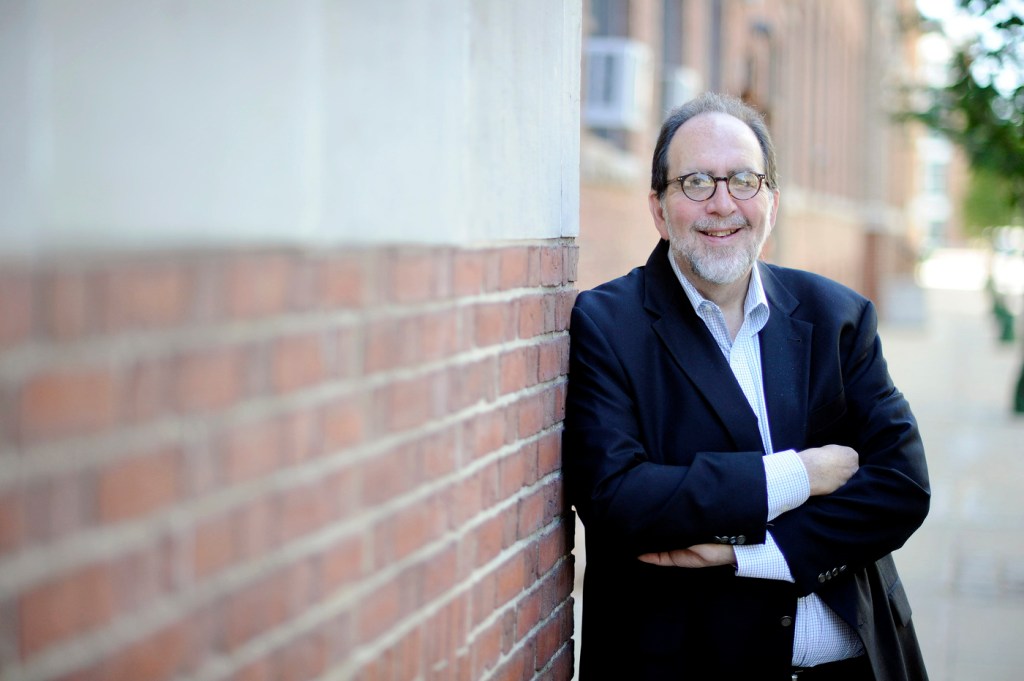3Qs: When journalism ‘sends a chill up my spine’

Jonathan Kaufman, the new director of Northeastern’s School of Journalism, is optimistic about the future of the industry, something he wouldn’t have been able to say five years ago. Now he’s confident that great opportunities lie ahead, noting that legacy media organizations have found a way to survive through a combination of pay walls and free content while digital storytelling has continued to evolve. Northeastern students, he says unequivocally, will be well trained for journalism in the 21st century.
Kaufman comes to Northeastern from Bloomberg News, where he was an executive editor. During his accomplished career, he’s also reported for The Wall Street Journal and The Boston Globe. Here, the Pulitzer Prize-winning journalist holds forth on what attracted him to the university, what media organizations journalism students should follow on Twitter, and what make the best news stories.
What attracted you to Northeastern?
The appeal of coming to Northeastern was multifaceted. First, it’s about training the next generation of journalists and teaching them what they need to know for the 21st century. That’s a big part of my vision for the program, helping to train reporters, writers, producers, and photographers in this new media world. Northeastern is an ambitious place and is very much on the move, and the journalism school is on the cutting edge of the digital revolution, particularly with the Media Innovation program. But the school is also rooted in the moral values of what journalism should be. The co-op program is terrific as well. I like to think of it as a teaching hospital, where you teach students what to do and then they go out and do it. This is the best way to prepare students for the media world. All these things brought me to Northeastern.
I’ve already loved meeting our students here, too. They’re very savvy and aware of the new media world. They also have passion and commitment to telling a great story, making the world a better place, and holding big institutions accountable, all of which help make up the bedrock of any kind of journalism.
According to a new Pew Research Center analysis, about six in 10 online Millennials report getting their political news on Facebook in any given week. In your view, what are the social media “must follows” for any journalism student?
I think that from a social media perspective, you want to have a broad diet. You should follow at least one or two mainstream media organizations, such as The New York Times, The Wall Street Journal, The Boston Globe, or The Washington Post. You also want to be following one of the new media organizations. If your interest is politics, follow Politico. If your interest is business, follow Business Insider. BuzzFeed is also very interesting and Huffington Post has a lot of content. And I think everyone should follow an international news site, whether it’s Al Jazeera or The Guardian or your favorite newspaper in a country you want to visit or where you did co-op or study abroad. I think it’s important to see how other parts of the world cover any number of issues, like the Middle East or gay marriage.
I’m looking forward to teaching because students will be telling me about news websites I may not have seen yet.
When you reflect on your own journalism career, can you think of a piece you have written for which the story idea came from an unexpected place?
For me, the best stories have always been the personal, intimate stories that reflect larger forces. One that comes to mind is an issue still relevant today. One of the stories I’m proudest of was one I did for The Wall Street Journal about a 10-year-old African-American girl and what it was like for her to live in a Baltimore neighborhood where all the men in her life were in prison. What was interesting is that originally the story was about incarceration. I wrote a draft that focused on a young drug dealer who went to prison, came out, and ended up there again. I handed in the story to my editor, and he said it’s a very good story, but in the end it’s a story about a drug dealer who goes to prison, fails on the outside, and then goes back in. But the editor said, “He has a 10-year-old daughter. I’d read 3,000 words about her.” So I went back and told the story through her eyes. It really had a huge impact on me as well as readers.
For me the best stories are the ones that take you to a place you haven’t been before, that bring readers or viewers there and make them look at the world in a different way. The best reaction you can get is, “God, I never knew that.” That’s when journalism works, when it sends a chill up my spine because you’re expanding people’s view of the world.




